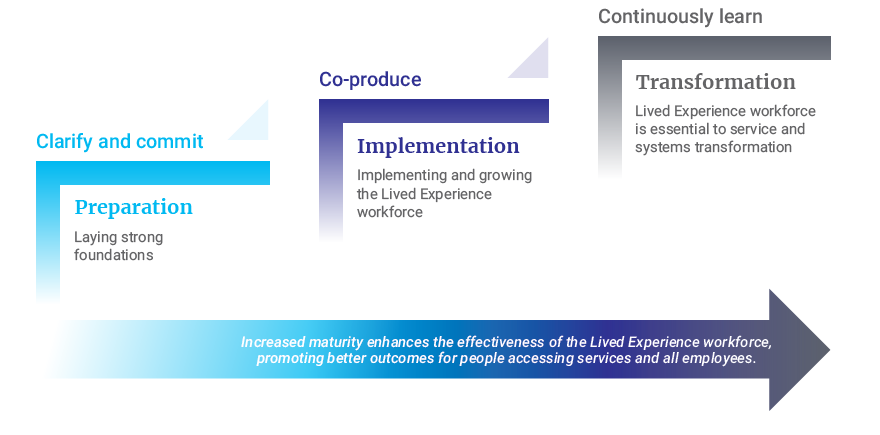Development stages for employing organisations
The three stages of development described in this section provide guidance to employers to progress Lived Experience workforce development in a sustainable and effective manner. Employers may include public and private health services, non-government organisations, primary and allied health care services, service commissioners and funding bodies, and educational institutions.
This is not a prescriptive model, rather a set of strategies and tasks to achieve best outcomes. The tasks can be addressed at different times and in alternate orders according to the needs and current state of development within individual jurisdictions and organisations. To be aware of the full range of strategies and actions that contribute to effective workforce development, organisations are encouraged to familiarise themselves with all stages of development, regardless of where they anticipate their development currently sits.
Information across the stages has been grouped under themes: leadership and workplace culture and strategies; policies and planning; and development. These stages are applicable across all stakeholder settings. In particular, the first stage, developing clarity about the Lived Experience workforce and connecting service users with relevant services, is applicable to all service providers including General Practitioners and individual private service providers.
Stages of development for an embedded Lived Experience workforce

Although it is recommended preparation occur before employing Lived Experience workers, it is also recognised that the workforce is evolving differently in different contexts and locations. It is never too late to review the early stages and ensure the steps that lay the foundations for effective development of the workforce are addressed.
Table 3: Summary of employer actions for Lived Experience workforce development

Note: This summary represents key actions that any employer may take to develop and embed a Lived Experience workforce. Actions for organisations with specific interests, including regional and rural services, involuntary services, and service planning and funding appear in separate checklists throughout the National Development Guidelines.




